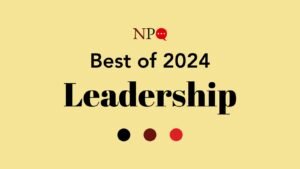
February 28, 2017; New York Times
Thomas P. Campbell has been the director and chief executive of the Metropolitan Museum of Art for eight years, but yesterday he announced his resignation after a period of financial decline. According to the New York Times, however, circumstances indicate he was forced out.
Daniel H. Weiss, the Met’s president and chief operating officer and a “special committee of the board” hire who some reportedly thought was made to compensate for Campbell’s administrative deficits, will serve as interim chief executive through the transition. He was to have reported to Campbell but was an ex officio member of the board of trustees. Soon after he joined the staff, he announced that without some decisive cuts and revenue building, the museum would soon be facing a $40 million deficit. This is a not-uncommon pattern; perhaps you recognize it as the stuff of some flawed leaders’ nightmares. (And who among us isn’t flawed?)
“We are not looking to appoint a new director immediately,” said Daniel Brodsky, the museum’s chairman, in a separate letter, “but instead will take some time to consider the leadership needs of the museum in a thoughtful and deliberative way.”
NPQ has long reported on a series of layoffs, including some of the key staff who were leading Campbell’s major initiatives designed to secure the future of the institution, and the postponement of a new $600 million wing for modern and contemporary art. On the other hand, attendance has increased significantly under Campbell’s leadership and the museum’s exhibits have met with much critical acclaim.
Sign up for our free newsletters
Subscribe to NPQ's newsletters to have our top stories delivered directly to your inbox.
By signing up, you agree to our privacy policy and terms of use, and to receive messages from NPQ and our partners.
But there is no doubt that Campbell, a former Met curator, did not end his tenure with overwhelming staff support. “To have inherited a museum as strong as the Met was 10 years ago—with a great curatorial staff—and to have it be what it is today is unimaginable,” George R. Goldner, a former longtime Met head curator, said earlier this month, and evidently many board members and members of the curatorial staff agree. But, as this Times article asserts, the board cannot be given a free pass; it was, after all, overseeing and approving Campbell’s plans.
To be sure, it seems that much of Mr. Campbell’s demise could be attributed to a culture clash—to his trying “to bring the museum into the 21st century” as he often said, without properly accounting for the internal conflict that might result.
Perhaps most critically, he failed to build a strong base of internal support for his agenda of change, leaving many employees—and even some trustees—feeling angry and alienated. Curators were asked to curtail spending for shows and acquisitions. And the Met announced plans to cut back its programming to about 40 exhibitions a year from about 60, an ambitious schedule even for the Met.
Still, let’s return to that original, simple pattern. The Times reports that “according to a senior executive in the art world with knowledge of the board’s thinking on the succession plan, who refused to be identified because of the sensitivity of the situation, the trustees intend to use the next few months to see if Mr. Weiss is up to the job.”—Ruth McCambridge












